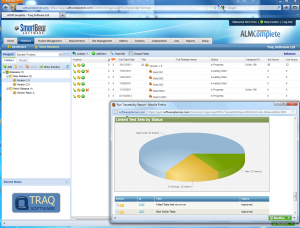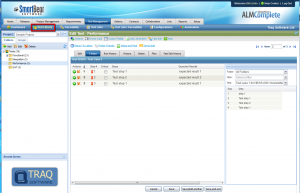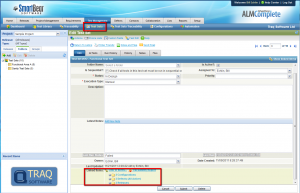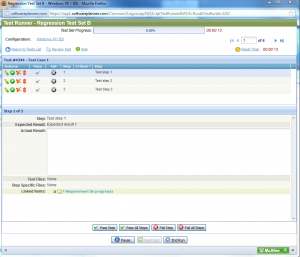The Test Management solution QAComplete 9.7 has been out for around 3 months now. In that time we’ve had the opportunity to implement for many clients and evaluate the new feature set in the real world. Billed as a solution comparable to HP’s Quality Center there are some interesting new features to help teams manage their QA process here.
With 3 months of use under our belts our impression is that SmartBear have been listening to their client base. They have restructured the way testcases are managed but retained the core traceability and visibility features. Essentially it’s still easy to use but delivers a far richer feature set for the QA team.
So here are some of the key features from this release that stood out for us:

You can now define releases in terms of versions, builds, iterations (or using which ever nomenclature best suite your setups). With releases defined you can then link all other test management artifacts back to the release. Where this delivers big benefits is with traceability reports for a release. You can now quickly run a report to see which requirements have been implemented for a release, which defects are impacting the release and which sets are being executed. This does make it really easy to see at a glance exactly where you are up to with a release.

The whole approach to testing in QAComplete has been restructured. No longer do you have a ‘Test Cases’ area but a whole new ‘Test Management’ area. This delivers a test library, configurations, sets and an execution area. This brings QAComplete right into the same space as HP’s Quality Center product with a similar feature line up. Not only that but also the capability to export your data from QC and import directly into QAComplete.

The new library feature allows you to store all your testcases in one area of QAComplete. These can then be reused within sets. Tests are now version controlled and contain steps (a major omission in previous versions which is now rectified). The steps feature is easy to use. You can enter steps and expected results in much the same way as you would in a spreadsheet. In addition you can quickly reuse steps from other cases by dragging and dropping from other testcases in the library.

Test management execution runs are now tracked against configurations. This makes it easy to trace runs against say different browser types. You can structure your configurations into folders, add custom fields and link to other artifacts like defects.
All of this comes together in the new test sets area. A set contains a collection of cases from the library. The test management set is then executed against a configuration and a release. So for example you might run your regression set against, release version 1 and XP/IE8 configuration. Each testcase within the set is then executed in turn, where each step within the case is given a pass or fail result. The first core concept to grasp here being that a set is linked to the releases it will be executed against and the configurations the tests will be run on (see below).

From here when you run the set you are given the chance to specifiy exactly which release and configuration you will run this against. Crucially here you can specifiy multiple combinations at the same time. So you could for example run against version 1 and version 2 of your product at the same time. Or you could run against config A and config B at the same time.

The new run and execution engine in QAComplete makes running the testcases very straight forward. Once you’ve specified the release and config to run against you can step through each testcase in the set and mark the individual steps as either pass or fail. Time taken to execute is tracked along with percentage complete.
Whilst each test case is given an individual status, the set is also given an status. So when you complete the set you can either pause the run, or end the run as a pass or fail.
In summary this is quite a prescriptive workflow that has been implemented within QAComplete’s test management engine. It’s either an approach that will work well for your process or it won’t. Having said that it’s an approach that has worked well within other popular test management tools for years now, so it’s well proven and well worth trying out.